
CFI's Core Research Domains
CFI Singapore drives innovation in coastal protection and flood resilience through a multidisciplinary approach that combines science, engineering, and digital technologies. Its research supports the development of adaptive strategies to address climate risks and ensure long-term sustainability for Singapore’s coastlines.
The four core research domains are as follows:
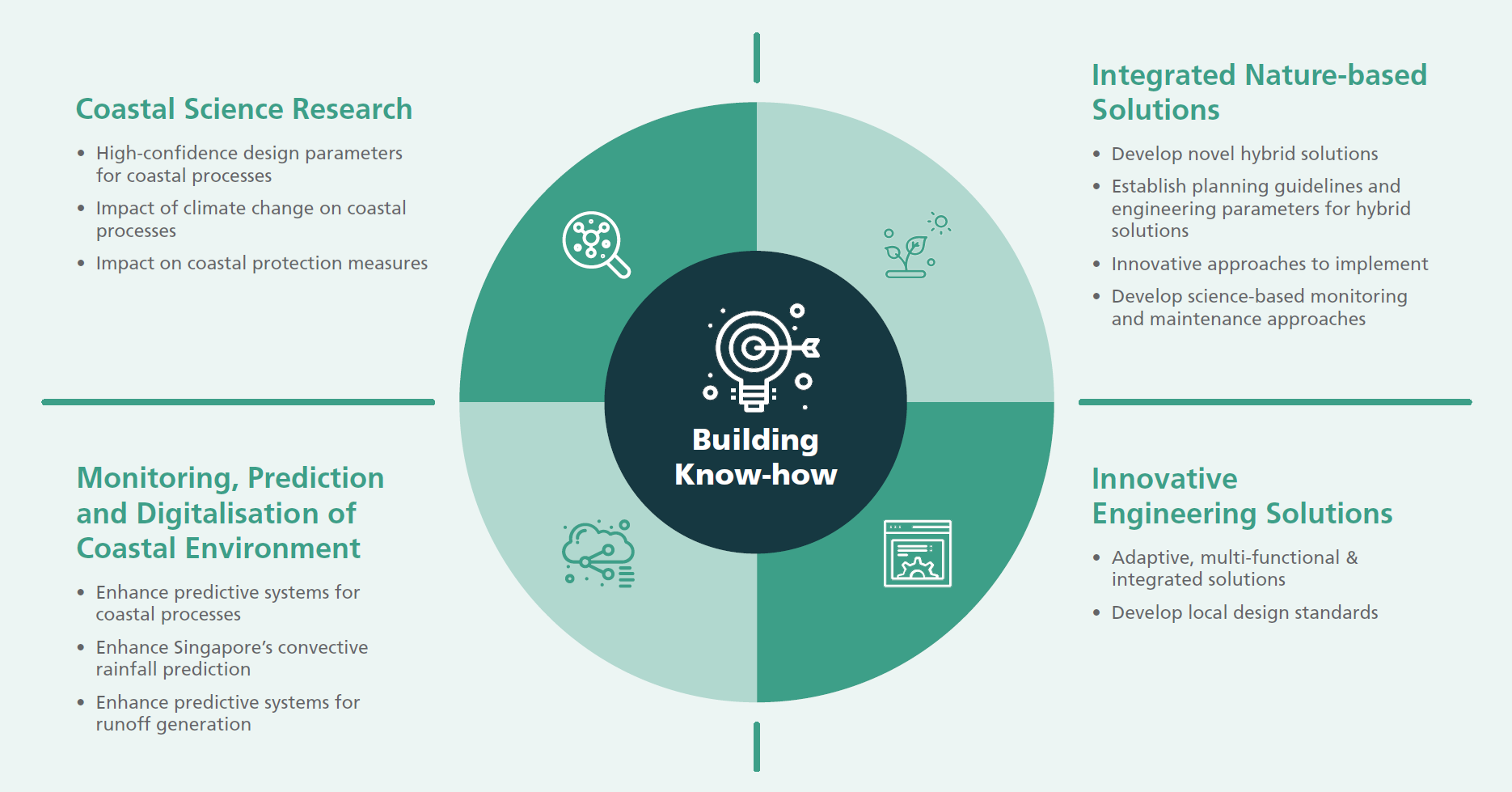
Horizontal 1 (H1): Coastal Science Research
H1 aims to inform the design of future-proof coastal structures by developing reliable design parameters that anticipate the impacts of climate change on coastal and rainfall processes.

Precision in Predicting Extreme Coastal Events
PI: Dr Pavel Tkalich (NUS, TCOMS)
Developing models to simulate extreme local wind waves and storm surge conditions, enhancing the understanding of the combined risks these events pose when they occur concurrently.
Models and methods developed through this research will provide Singapore's agencies, including NEA and PUB, with advanced tools for long-term planning against coastal floods.

Unravelling Uncertainties in Coastal Extremes
PI: Associate Professor Low Ying Min (NUS)
Providing detailed insights into the factors influencing extreme coastal flooding events, enabling PUB to devise more effective risk mitigation strategies.
Importantly, research findings could offer insights into the impact of regional climate changes and global sea level rise on extreme coastal water events, supporting strategic planning and policy formulation.

Strengthening Coastal Models for Climate Adaptation
PI: Assistant Professor Li Yuzhu, Pearl (NUS)
Developing advanced models to accurately simulate coastal processes in Singapore’s unique environment—characterised by urbanisation, land scarcity, and low-lying areas. Quantifying how these processes interact with and influence the coastline over time to support sustainable coastal protection solutions.
Modelling and analysis tools developed will assist government agencies in the design and planning of sustainable coastal infrastructure by accurately estimating the impact of coastal environments on structures and, conversely, the impact of coastal structures (and human interventions) on coastal dynamics.
Enhancing Sediment Monitoring with Smart Technology
PI: Professor Adrian Law (NUS)
Enhancing the understanding of sediment transport and developing cost-effective remote sensing techniques for long-term monitoring of suspended sediment distributions in Singapore’s coastal waters.
Integration of research findings with satellite and UAV remote sensing technology would enhance accuracy of shore protection assessments and strengthen numerical models, enabling better prediction of local coastal erosion and sediment influence zones.
Horizontal 2 (H2): Monitoring, Prediction and Digitalisation of Coastal Environment
H2 focuses on harnessing big data and machine-learning models to improve predictive systems for coastal and inland water events, enhancing accuracy of weather forecasts and bolstering early-warning systems for emergency response.

Forecasting Floods, Fast
PI: Associate Professor Victor Wang (SIT)
Developing advanced modelling tools that integrate machine learning with existing data to significantly enhance the accuracy of storm surge and wave forecasts along Singapore’s coastlines.
Research findings will equip Singapore with the capability to predict storm surges with up to a five-day lead time—enhancing preparedness and response strategies when such conditions occur.

Data-Driven Rain Prediction
PI: Professor Vladan Babovic (NUS)
Exploring the application of advanced technologies and methodologies to boost the speed and accuracy at which PUB predicts heavy rainfall.
From high-resolution rainfall re-analysis datasets to novel algorithms that integrate microwave links and CCTV footage to data-informed machine-learning strategies, this research will help scientists understand how climate change and urbanisation affect convective rainfall patterns, supporting policy and planning to enhance flood response and management.
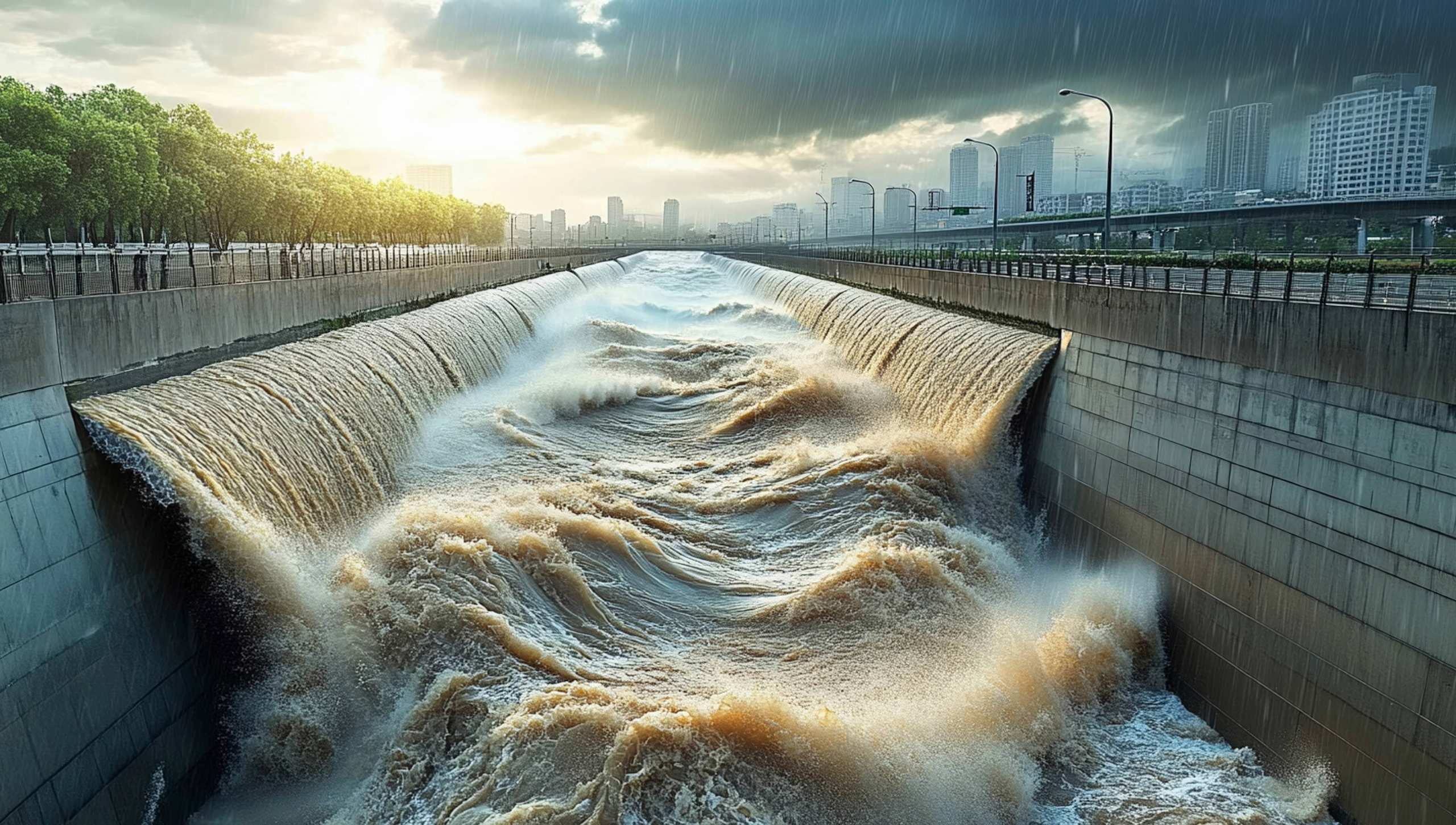
Managing Urban Flood Risks
PI: Associate Professor Simone Fatichi (NUS)
Enhance the understanding of runoff generation processes in Singapore and enable accurate flood risk assessment in a changing climate.
Research findings will enable the development advanced hydrological models to predict floods and test mitigation strategies in Singapore. Understanding rainfall-to-runoff processes and water flow in urban catchments will enable effective drainage and flood-retention solutions, supporting climate-resilient urban planning and infrastructure development.
Vertical 1 (V1): Innovative Engineering Solutions
V1 focuses on developing novel coastal defence structures, emphasising adaptive, multi-functional and modular designs that integrate into existing infrastructure. This domain area aims to enhance resilience, minimise land use and establish new local design standards tailored to specific coastal dynamics and flood risks.
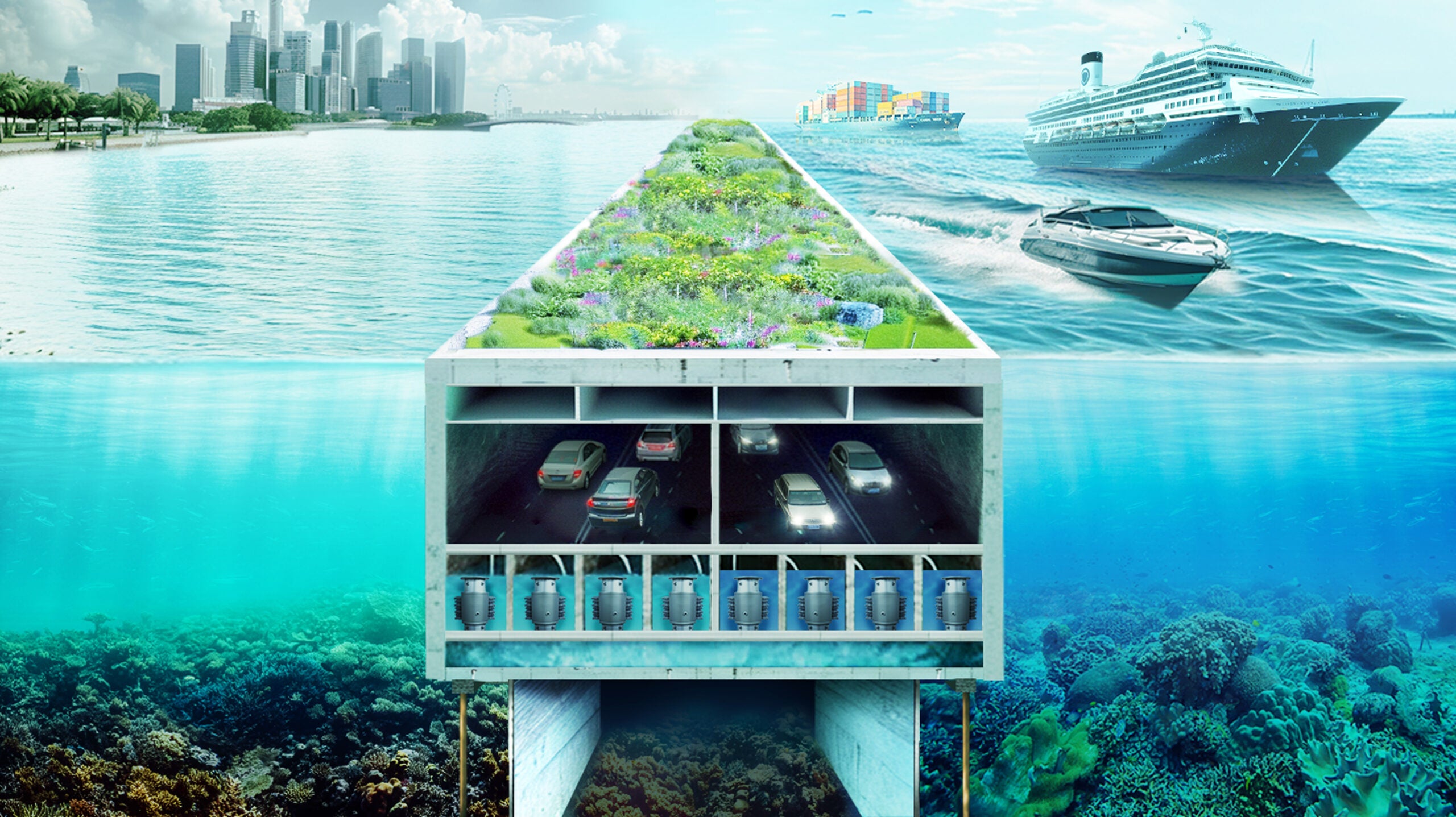
Building Better Barriers
PI: Professor Chu Jian (NTU)
Advancing coastal defence systems in Singapore by developing an innovative, flexible seawall design. Compared with conventional bunds and breakwaters, the proposed systems are more cost-effective and offer adaptability and sustainability at the same time through intelligent engineering.
A floating box with an impervious, flexible curtain anchored to the seabed provides the basis for a highly adaptable seawall system. This could reduce construction costs and offer flexibility for future redevelopment projects. Furthermore, it uses less concrete and earth, making the seawall more environmentally friendly while reducing ecological disturbance. Its height is also adjustable to ensure long-term adaptability.
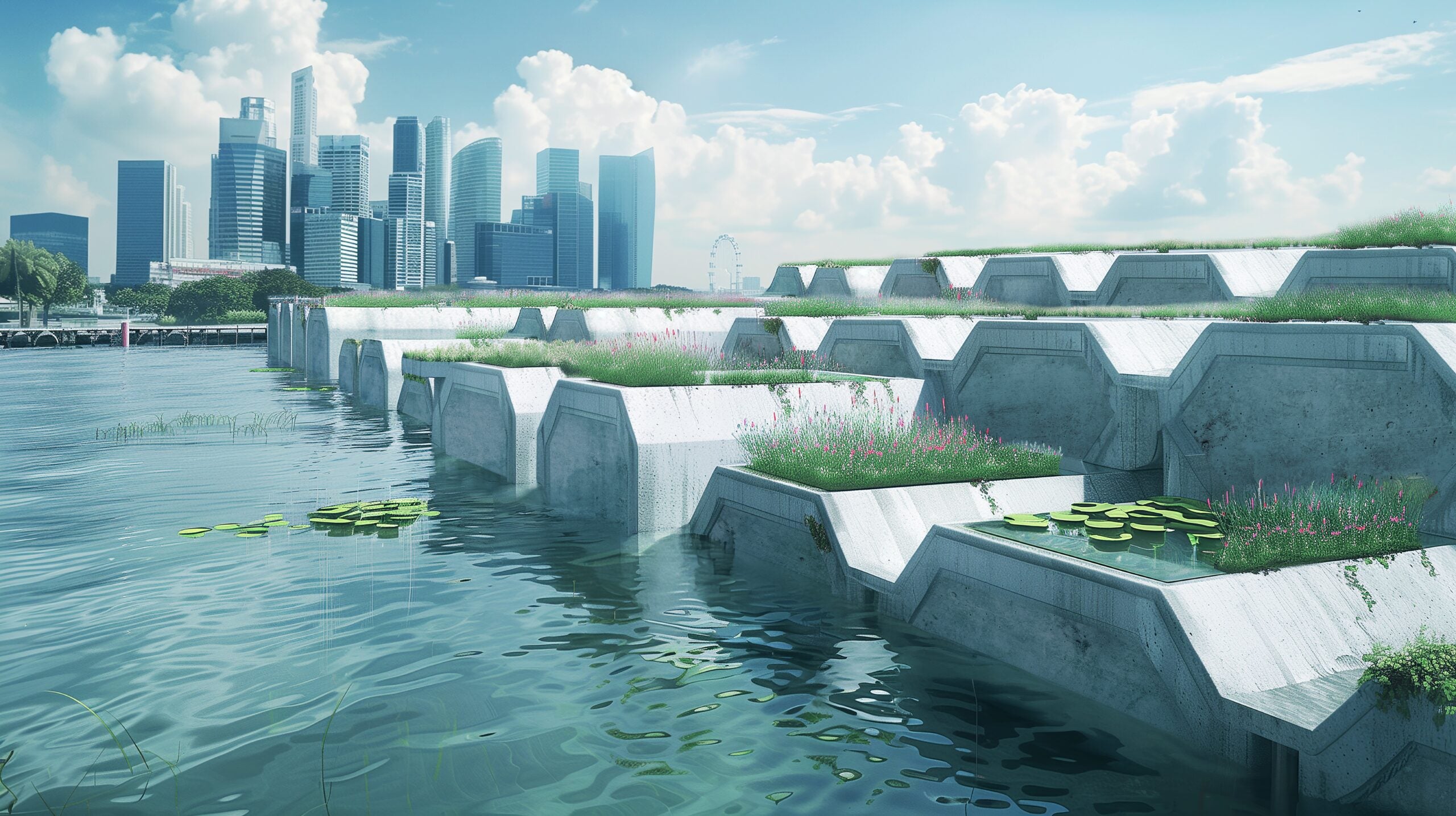
Keeping The Rising Seas At Bay
PI: Assistant Professor Chew Soon Hoe
(NUS)
Developing modular, watertight units designed to enhance existing coastal protection structures - bolstering defences against the impacts of sea level rise.
A modular design allows for easy expansion and adaptation, ensuring long-term effectiveness and resiliency in line with future environmental changes. Research findings will inform pilot field tests as well as engineering guidelines for the implementation of such systems.
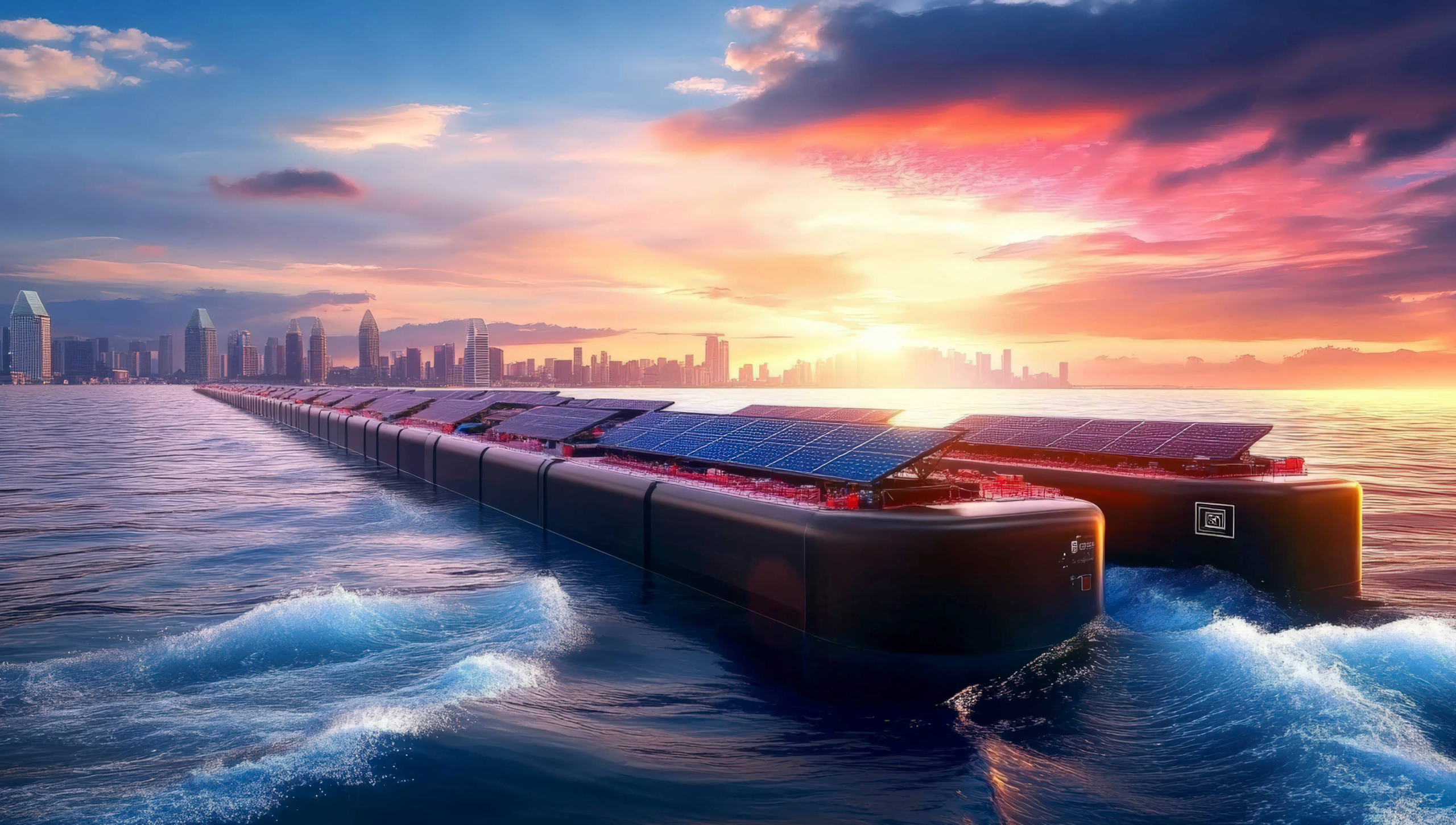
Smart Floating Systems for Coastal Protection
PI: Associate Professor Qian Xudong
(NUS)
Developing coastal protection solutions at two targeted locations off Singapore's coast using both anchored and floating structures. The multifunctional breakwaters are designed to reduce wave impact and coastal erosion, adapt to sea-level rise, and harness green energy.
Research offers cost-effective solutions for offshore areas in Singapore, with flexible design and reconfiguration options. It integrates energy harvesting facilities and devices to supply green power to off-grid areas.
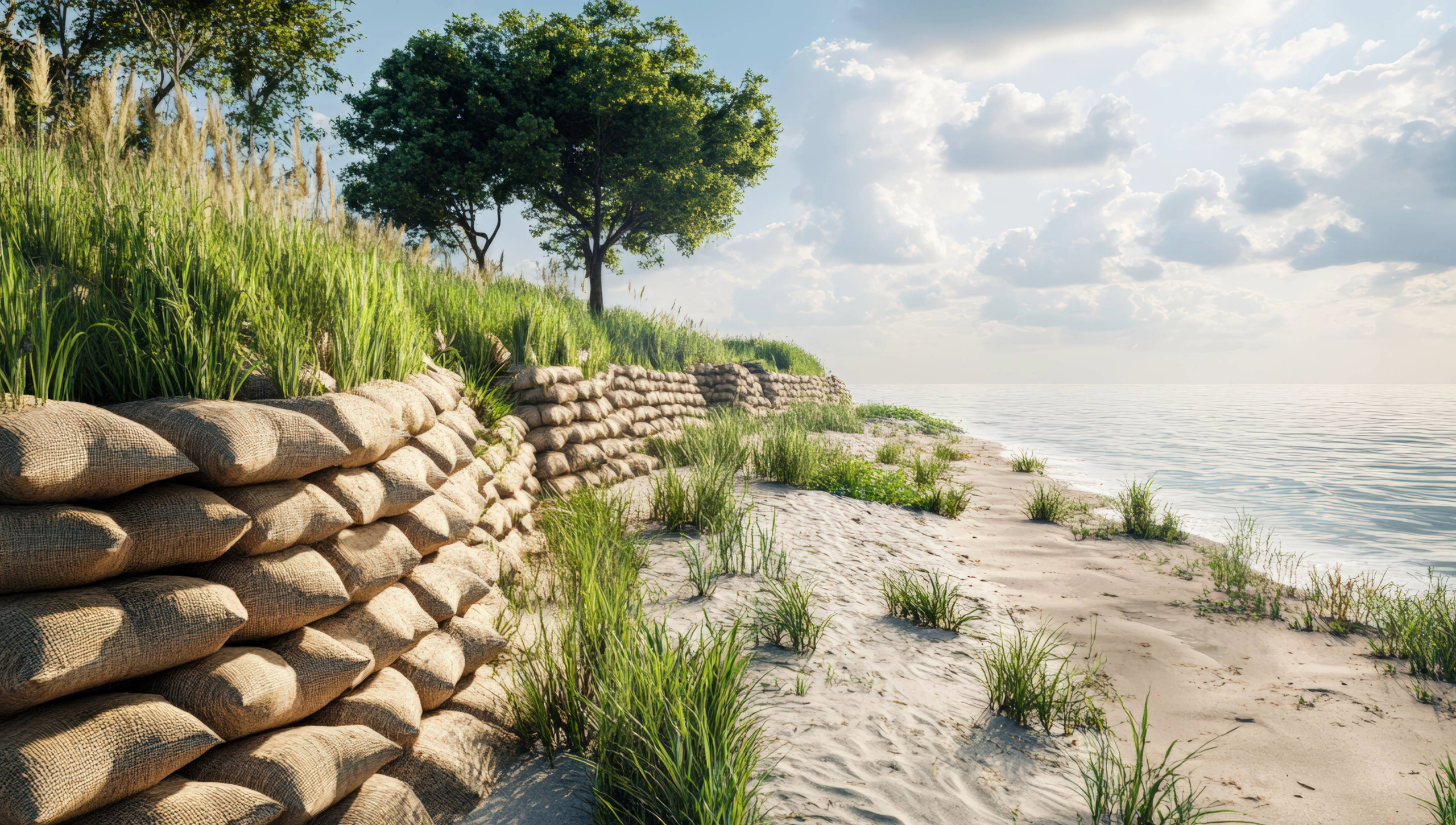
Cementing Sustainable Solutions
PI: Professor Chu Jian (NTU)
Developing a cost-effective and eco-friendly method for coastal protection and recovery of land lost due to sea-level rise by elevating the beach profile through soil accumulation. Research will explore the use of soil-filled jute tubes or bags to create barriers that prevent coastal erosion, accumulate sediments, and restore land lost to seawater.
This eco-friendly method preserves biodiversity, minimizes marine ecosystem disturbance, and supports Singapore’s Green Plan 2030 and Zero Waste Policy with a sustainable solution.
Vertical 2 (V2): Integrated Nature-Based Solutions
V2 leverages nature-based approaches to create robust, resilient hybrid solutions for coastal protection, which involves developing guidelines so they can be implemented, maintained and monitored over the long term.
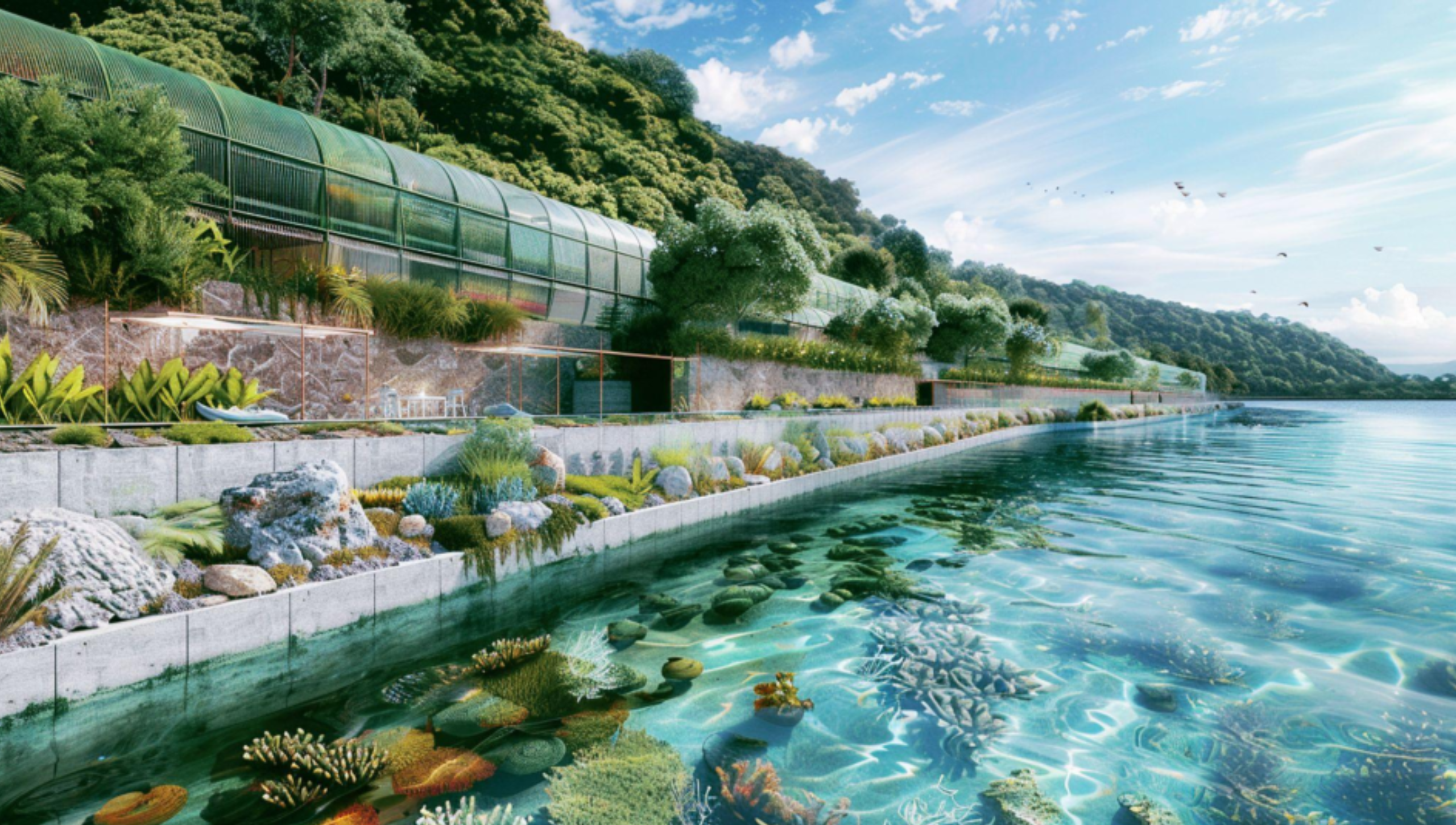
Painting Singapore's Shores Green-Grey
PI: Associate Professor Peter Todd (NUS)
Exploring how combining natural ecosystems with engineered solutions can make coastal protection more sustainable. It maps and identifies potential sites for implementing hybrid ‘green-grey’ approaches.
Findings will inspire innovative, cost-effective coastal protection measures that integrate ecological restoration—enhancing biodiversity and ecosystem services such as carbon sequestration. Findings will inform ongoing projects and support national agendas like the Singapore Green Plan 2030, contributing to climate change mitigation and the restoration of vital coastal ecosystems.

Taking a Leaf Out of Nature's Book
PI: Assistant Professor Gary Lei Jiarui (NUS)
Developing and testing hybrid coastal protection strategies that blend traditional engineering structures with nature-inspired solutions.
Integrating mangroves and seagrasses into hybrid systems not only reinforces coastal defenses but also boosts carbon sequestration and biodiversity. This approach plays a vital role in Singapore’s response to rising sea levels, helping to advance coastal management practices and support resilient, adaptive infrastructure.
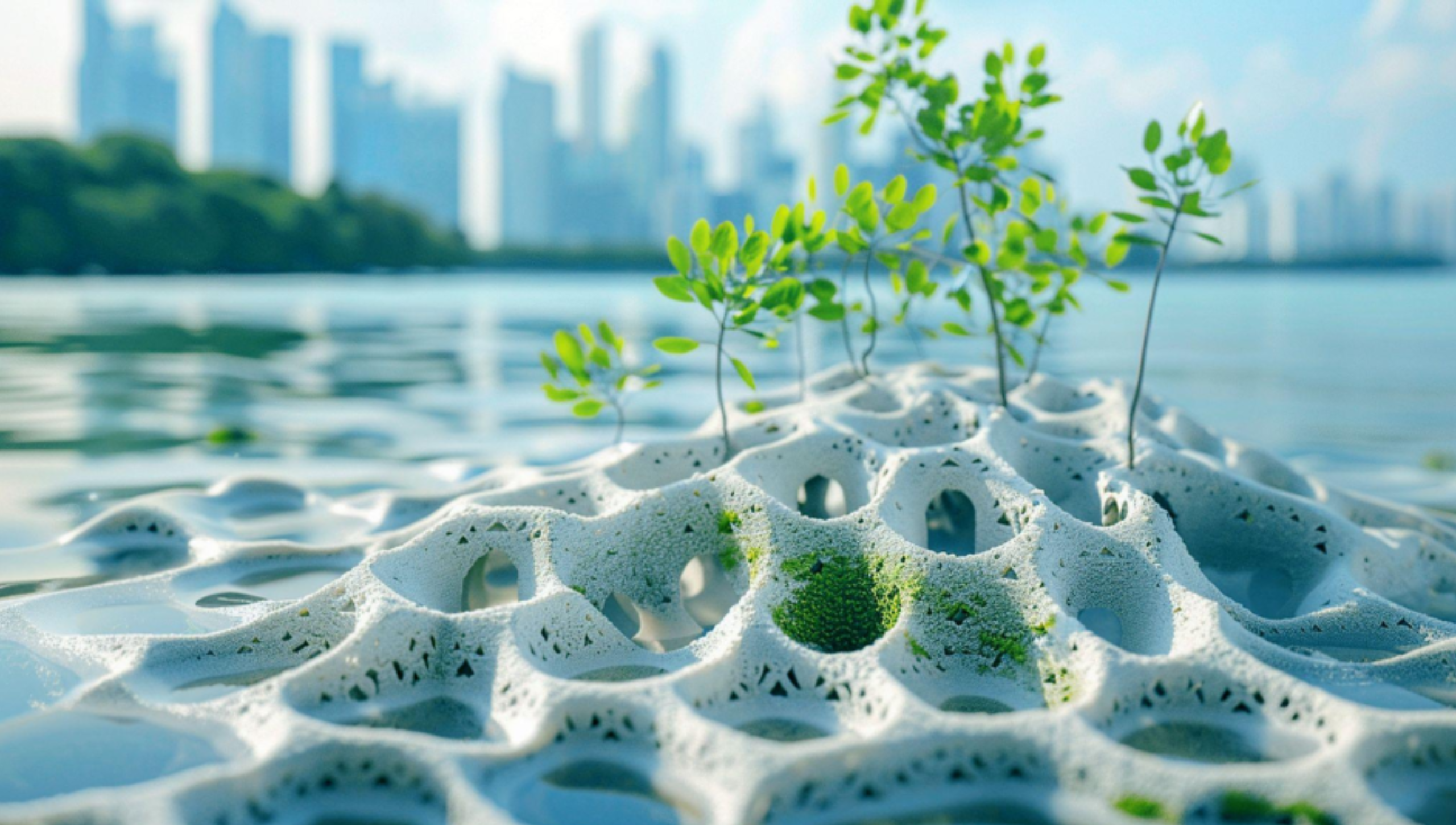
Greening Singapore's Grey Shores Through Nature-Based Solutions
PI: Associate Professor Peter Todd (NUS)
Optimising the growth and survival of coastal species within hybrid defence system, such as mangroves, seagrasses, corals and macroalgae.
Insights and technologies stemming from this research could also be transferred to other agencies, enhancing coastal protection measures across Singapore and other regions facing rising sea levels.
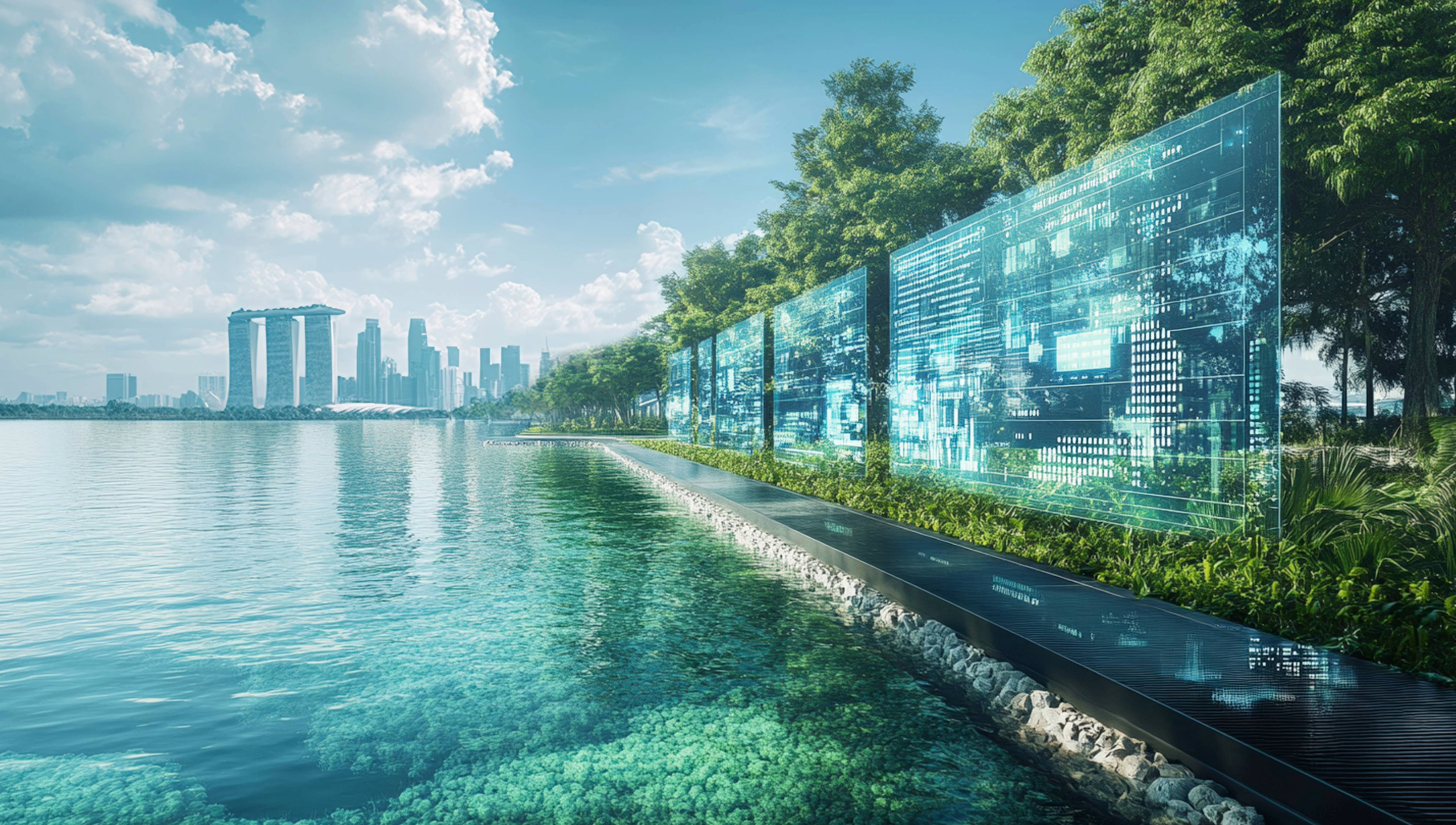
Harmonising Engineering Solutions with Nature
PI: Professor Karina Gin (NUS)
Evaluating the effectiveness of hybrid coastal protection strategies by balancing natural and artificial elements using the Integrated Coastal Ecosystem Model (ICEM). The focus is on enhancing the sustainability and functionality of coastal protection systems amidst the challenges posed by climate change and human activities.
Research findings and model developed will help Singapore in developing and evaluating hybrid strategies to enhance the nation’s coastal resilience efforts against rising sea levels and climate change.
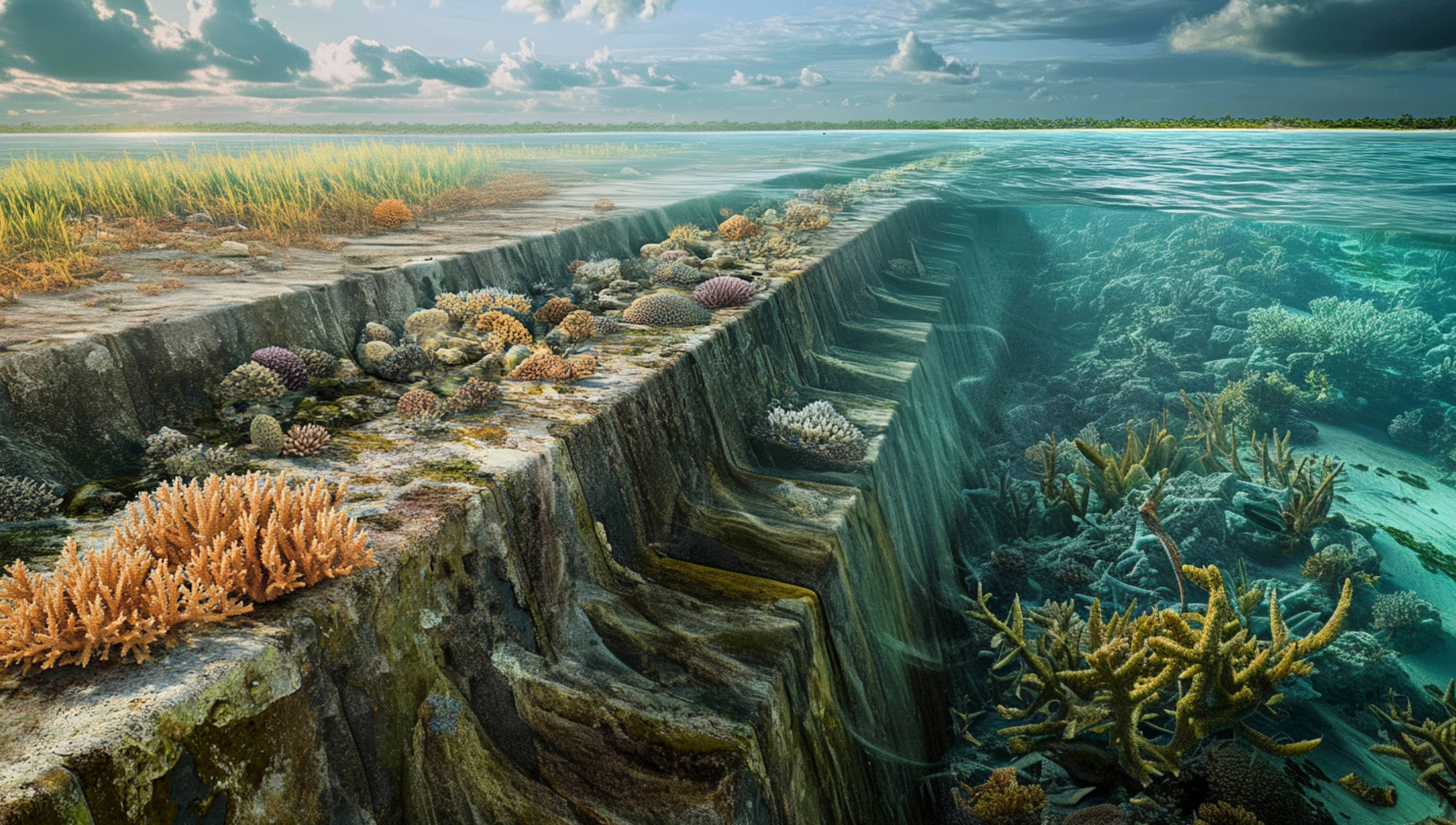
Enhancing Seawalls for Coastal Resilience
PI: Dr Ronald Chan (A*STAR)
Improving coral-infused hybrid coastal protection systems by studying the biological and design factors that influence coral larval settlement and growth.
Research will enhance the effectiveness and long-term sustainability of these systems by identifying key barriers and proposing optimised design strategies that support coral integration and coastal resilience.
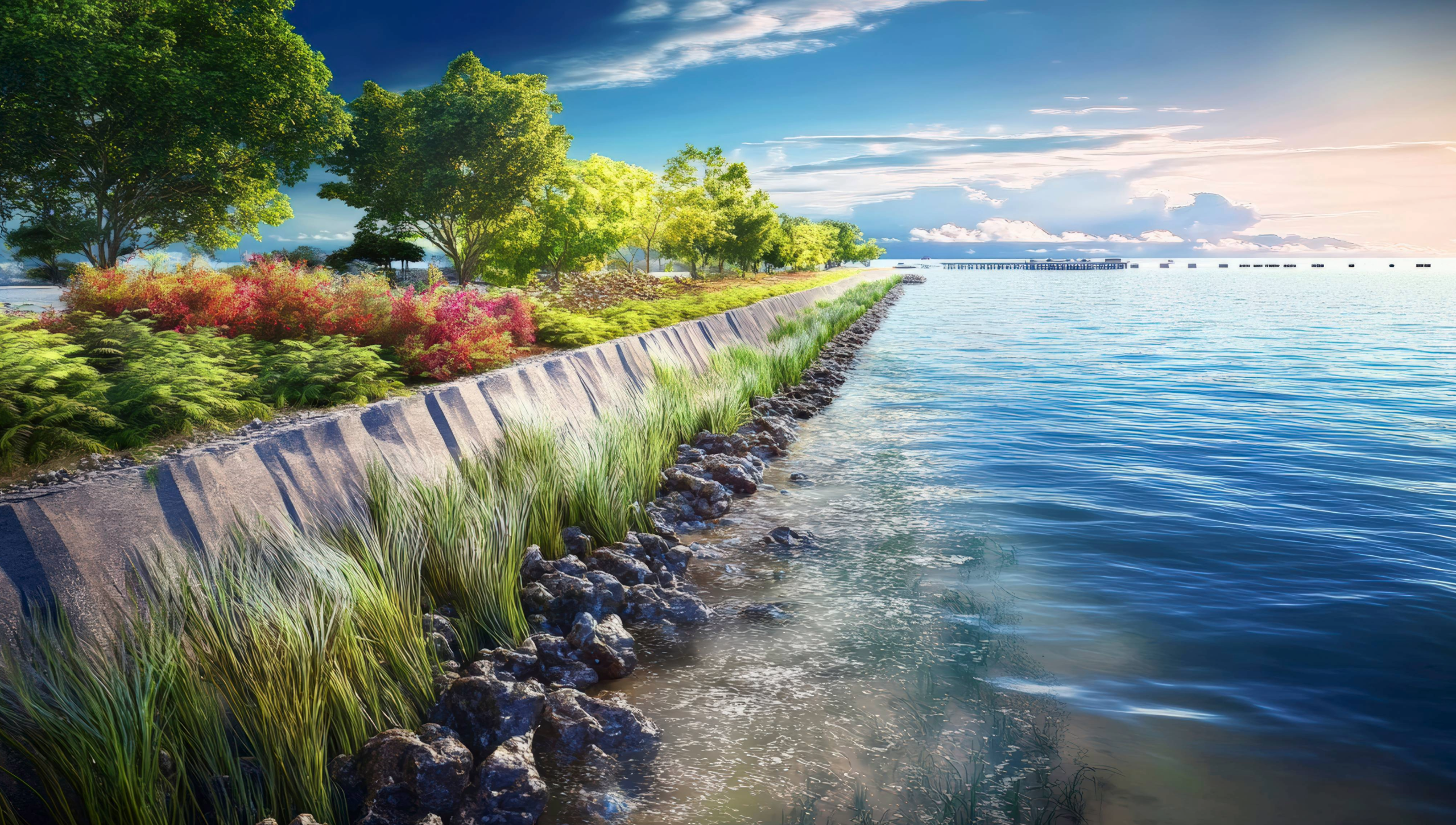
Taking Hybrid Solutions to a New Level
PI: Associate Professor Peter Todd (NUS)
Evaluating the effectiveness of hybrid shorelines that combine vegetation with hard structures, particularly under the challenges posed by climate change and human activities.
Research will generate both fundamental and applied knowledge to advance eco-engineering designs and creation of ecological models and decision-making tools.
Download CFI's project booklet for more information on each project
CFI Singapore Tranche 1 and 2
If you wish to reach out regarding a specific project, please email CFI Singapore at cfisg@nus.edu.sg


